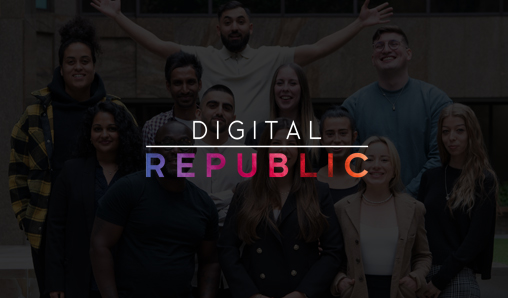
Data-Driven L&D: How Learning Analytics Can Enhance The Employee Experience

Learning and development professionals have a lot to contribute when it comes to improving employee experience and, in particular, they are best placed to make use of all the data organisations have at their fingertips.
One of the hallmarks of the digital transformation of modern business is the ability to deliver a rich, personalised user experience to employees as well as to customers.
This experience stretches across the whole employee lifecycle – from hiring and onboarding, though to ongoing training and development, all the way to the time that an employee leaves the organisation.
Companies that deliver this more effectively are likely to be more attractive to gen-Z employees (who are particularly demanding of a good employee experience) and will inspire more dedication, longevity and energy on the part of their employees.
LMSs and other learning systems, if well implemented, can of course make significant contributions to individual aspects of the employee experience.
The vision for L&D professionals can and should be much wider than this, however, encompassing very broadly the ‘development’ aspect of their domain expertise.
The overall employee experience can be greatly enhanced by proper use of the data generated by enterprise systems. What’s more, L&D professionals are the best placed individuals in an organisation to understand what data each system knows.
Not only do they have a good knowledge of what each system does, but they can also advise how this data can be aggregated and analysed in order to give the organisation a 360-degree view of the employee.
In addition they can look at the behavior of that employee’s cohorts and understand how to improve their overall digital experience.
The employee lifecycle spans many different systems
If we think about the employee lifecycle, it will look something like this:
- After they’re hired, the employee will first receive some initial items (e.g. a computer, a company t-shirt, etc.) and some very basic start-up training about corporate systems (productivity suite, HR systems, benefits enrollment sites, etc).
- The new hire may then need to do some kind of compliance training (such as security or diversity training) before beginning work.
- Then they will likely receive some job-specific training at how to perform their particular job tasks. During this time, their level of success at these tasks can be evaluated and logged.
- Ideally, the employee will continue to grow and evolve, taking on more responsibility, until they leave the organisation for whatever reason. At this point they will ideally do an exit survey.
At each of these points there is a tremendous amount of data that can be captured and used to drive a better employee experience, as well helping to make the employee more efficient.
Even at the point of onboarding, did the employee at least log into their enterprise systems? If, for example, the employee did not log into their benefits or HR system, perhaps they’re having technical difficulties, or perhaps they weren’t properly onboarded, and they don’t understand how to ask for time off or how to enroll in a retirement scheme?
If you want to make this employee feel happy and cared for, you could automatically send them an email, or better yet, reach out after a day or two with an offer of extra help to make sure that they have everything they need.
The same could be said for any of these systems. If the employee doesn’t log into their LMS, or doesn’t finish their coursework, there may be good reasons for this, and it is important to understand these reasons.
This data can, of course, also be used in aggregate to see what is happening at the cohort level.
Perhaps a large number of employees don’t understand how to access the Excel training course that is on offer, or many are finding the benefits system too unwieldy to use.
These resources, the training on these systems, or the internal communications around these resources may need to be upgraded for employees to truly feel that their digital resources are modern, usable, and help them perform their best.

How L&D professionals can add to the employee experience
While a number of these employee-facing systems may be owned by different departments (IT, HR, etc.) they all have similarities in that they have information about the employee which can be gathered to improve the employee experience.
Many of these systems either already support exporting these data, or can be instrumented to do so with very minimal effort.
One of the methods used is xAPI (which is short for ‘experience API) and is designed explicitly to be able to handle many aspects of the employee experience. Think of every digital touchpoint is an opportunity to evaluate how the workplace tools, processes, and learning moments (whether they are in the LMS context or elsewhere) can be improved.
Where does the expertise of gathering, processing, and understanding the meaning of this data lie? Primarily with the L&D professionals, as they are the ones who understand what data each system collects (or could collect), and how that data can be leveraged (individually and in aggregate), to improve the employee experience and make that employee more valuable to the company.
My recommendation to all L&D professionals is, therefore, to start inserting yourself as hub of the wheel in terms of driving an improved employee experience within your organisation.
The skills required are in your domain of expertise. Think of every moment of the employee experience as an opportunity to learn more about that employee’s skills and their experience.
Think of every digital touchpoint is an opportunity to evaluate how the workplace tools, processes, and learning moments (whether they are in the LMS context or elsewhere) can be improved.
In this way, L&D professionals are exceptionally well placed to contribute to making employees happier and more productive and help the organisation perform at its best.
Originally posted by Jeff Rubenstein.
If you enjoyed reading this article, you might find this post interesting too.
Follow us on our LinkedIn and Twitter to stay up to date with the latest news in the digital data-driven ecosystem
Digital analytics, optimisation, data science or programmatic expert, and looking for a job?
Check out our latest live vacancies here
Digital agency looking to expand your team with top-tier talent?
Send us your jobs here
Get in contact with us!


